Existing planning processes are unable to address local requirements since they are created with a top-down hierarchical perspective of traditional urban planning. However, research on bottom-up urbanization, which defines participatory processes in the production of space, is expanding day by day. The opportunities tactical urbanism can provide for cities under extreme stress as a result of rapid urban population growth, inadequate urban infrastructure, public resource constraints, environmental crises, increasing social inequalities, and polarizations have sparked a growing debate in the literature.
Recently, the use of the expression as a catalyst for a new approach to planning and design has made it important to carefully evaluate whether tactics can be integrated into strategic urban design without compromising the active participation and political influence of the public.
Tactical Urbanism
The term “tactical urbanism” was first mentioned by Mike Lydon and Anthony Garcia, urban designers, and planners who wrote a book on the subject in 2011. In their book, “Tactical Urbanism: Short-term Action for Long-term Change,” Lydon and Garcia defined tactical urbanism as “a city, organizational, and/or citizen-led approach to neighborhood building using short-term, low-cost, and scalable interventions intended to catalyze long-term change.”
Lydon and Garcia developed the concept of tactical urbanism as a way to address the challenges of urban development and to empower communities to take an active role in shaping their own environments. Also, local governments take advantage of the opportunities offered by tactical urbanism by temporarily introducing the planned spatial intervention, taking into account the change anxiety of the citizens.
Tactical urbanism is a grassroots approach to improving cities and neighborhoods through low-cost, temporary interventions. It involves the use of small-scale projects, such as pop-up parks, street murals, and traffic calming measures, to test ideas and create change in the built environment. The goal of tactical urbanism is to demonstrate the potential for positive transformation and to empower communities to take ownership of their own spaces.
Tactical urbanism projects can be implemented by a variety of actors, including community groups, local governments, and design professionals. These micro-urban interventions, where temporality is essential, are seen as a means of changing attitudes about space and social relations and promoting longer-term change.
According to Lydon and Garcia (2012), tactical urbanism works through five principles which are:
- A conscious phased approach to instigating change
- An offering of local ideas for local planning challenges
- Short-term obligation and practical/realistic expectations
- Low risks, with possibly a high reward
- The development of social capital between citizens, and the building of organizational capacity between public/private institutions, non-profit/NGOs, and their constituents.
In general, tactical urbanism often promotes a participatory “do it yourself” vision, in which those directly affected by a problem take action to actively address it. The do-it-yourself vision, which has become increasingly widespread in the first half of the 20th century, points to a situation that has existed for centuries within the framework of people’s need to organize their environment and the society’s reproduction of itself together with the space while producing the space.
Webb (2018) suggests that: “Tactical urbanism has the potential to… open up alternative political sites within the city as well as alternative methods of political debate which are not dependent on, or even centered around, verbal and textual exchanges… It breaks from traditional planning approaches which have advocated a linear separation of debate from action, instead incorporating action, in the form of experimentation with temporary physical changes and social events, as instrumental within the process of understanding places and their possible futures.”
Tactical urbanism can be a powerful tool for addressing a range of urban issues, including improving public spaces, creating safer streets, and activating underutilized areas. It can also help to build community engagement and foster a sense of ownership.
Also, Mike Lydon and Anthony Garcia wrote a book “The Tactical Urbanist’s Guide to Materials and Design” which provides guidance and inspiration for designing and implementing tactical urbanism projects. The book covers a range of topics, including the principles of tactical urbanism, the process of designing and implementing projects, and the use of different materials and techniques.
Difference between Tactical Urbanism and Strategic Planning
Usually, people think tactical urbanism and strategical planning are the same things but tactical urbanism and strategic urbanism are two approaches to improving cities and neighborhoods that are often used in conjunction with one another. However, there are some key differences between the two.
Tactical urbanism focuses on small-scale, low-cost interventions that can be easily implemented. These interventions are often reversible and temporary, allowing for experimentation and flexibility. Tactical urbanism’s goal is to show the potential for positive transformation and to empower communities to take ownership of their own spaces.
On the other hand, strategic plans tend to present a long-term vision that has broad appeal. Strategic urban planning focuses on determining selected areas of development for a city or metropolitan area and setting high-level goals.
Tactical urbanism and strategic urban planning can be used together to create positive change in the built environment and quality of the society. Tactical interventions can be used to test ideas and gather feedback, while strategic planning can be used to develop comprehensive strategies for addressing the broader challenges and opportunities facing cities and neighborhoods.
Tactical Urban Planning
Society always wants to be a part of the decisions that affect their lives, but increasing population and urbanization dynamics make it difficult for citizens to actively participate in decision-making processes. The globalization process experienced all over the world has brought important changes in the economic and social structure. The economic structure shaped around developments in information and communication technologies, flexibility, and innovation has led to the emergence of new organizational models, global ideologies, and cultures.
Tactical urban planning is an approach to planning and design that focuses on small-scale, low-cost interventions that can be implemented quickly and easily. It is similar to tactical urbanism, but with a focus on the planning and design process rather than the physical interventions themselves. According to Lefebvre (2018), in order for urban strategies to find a place in the space, they need to be owned locally and political and social power should be together.
Tactical urban planning involves using flexible, iterative approaches to planning and design that allow for quick testing and experimentation. It often involves working with communities and other stakeholders to co-create solutions that meet the needs and priorities of the people who live and work in the area.
Tactical urban planning can be used to address a range of issues, including creating more livable and sustainable communities, improving public spaces, and addressing the needs of underserved populations. It can also be a way to build community engagement and empower people to take an active role in shaping their own environments.
Types of interventions
Tactical urbanism interventions can take many forms, depending on the specific goals and context of the project. Some common types of interventions include:
Pop-up parks: Temporary parks or plazas that are created using low-cost materials such as planters, benches, and tables. Pop-up parks can be used to activate underutilized spaces and provide places for people to gather and enjoy the outdoors.
Street murals: Large-scale art installations that are painted directly on the street or on other public surfaces. Street murals can be used to beautify neighborhoods and create a sense of place.
Traffic calming measures: Strategies used to reduce traffic speeds and improve safety in residential areas. These can include the installation of speed bumps, roundabouts, or other physical barriers.
Parklets: Small parks or seating areas that are created by converting a few parking spaces into public space. Parklets can provide additional seating and green space in busy urban areas.
Guerrilla gardening: The act of planting flowers, vegetables, or other plants in public spaces without permission. Guerrilla gardening can be used to beautify neighborhoods and promote green space.
Pop-up bike lanes: Temporary bike lanes that are created using low-cost materials such as cones or painted lines. Pop-up bike lanes can be used to create safer streets for cycling and encourage more people to ride bikes.
These are just a few examples of the types of interventions that can be used in tactical urbanism projects. The key is to identify a specific need or challenge in the community and develop a low-cost, temporary solution that can be implemented quickly and easily.
Here are a few examples around the world:
SuperCrawl (Ontario, Canada)
SuperCrawl, In the early 2000s, a group of community organizers and local businesses looked to Hamilton’s emerging art scene for inspiration and established a monthly Art Crawl on James Street in downtown Hamilton. The project is a “pop-up” playground in the form of parkour. The Art Crawl was so successful that a local organization started a once-a-year spin-off event called SuperCrawl, in which the street is closed down for a day-long festival of music and activity in 2009.
Supercrawl is Hamilton’s premier multi-arts festival, fusing new and independent music with art installations, fashion, performance, literature, theatre, and artisanal craft. Supercrawl’s diverse multi-disciplinary program of sound, performance, visual, and media arts is staged along a pedestrian-only creative corridor in the heart of downtown. The project’s vision, “Supercrawl forges spaces of common ground and creative expression.”
Women Accessing Public Transportation (TOPUK) Project (Istanbul, Turkey)
TOPUK project is a really good pop-up urbanism example. The project is developed to make women’s access to public transportation safe, secure, and comfortable, it also, focused on the diversity of problems women tackled in everyday public transportation experiences. These issues ranged from streets to bus stops, to vehicles, and back to open public spaces. The prevalent social and cultural norms that guide gender roles influence emerging mobility patterns, resulting in a sexist discourse in transportation. The norms and resulting discourse, in turn, cause women to develop certain behavioral patterns, such as the inability to travel alone, at odd hours, adjust transportation routes and timing, and, in some cases, withdraw from travel.
A participatory design and implementation process is defined by the project methodology and the project is mainly coordinated by the EKA KAINAK team. Based on a selected street and a connecting public transportation stop (e.g. bus stop, metro/subway station) within the district boundaries, it entails a participatory workshop to define site-specific problems and possible solutions, a design marathon in which solutions are adapted to the project site for implementation.
JC Walks Pedestrian Enhancement Plan (New Jersey, US)
JC Walks Pedestrian Enhancement Plan was coordinated by Street Plans. Street Plans collaborated closely with Fitzgerald & Halliday Inc. in October and November 2017 to plan and implement six walkability workshops, one in each of Jersey City’s wards. The workshop locations were carefully chosen along corridors identified as unsafe for pedestrians based on feedback from pop-up public meetings and data analysis by Fitzgerald & Halliday Inc.
Street Plans designed and facilitated temporary curb extensions for each workshop, which included a public-feedback board, tables and chairs, wayfinding signage, planters, and bright paint. The demonstration projects, in addition to gathering feedback from residents at the project sites, were part of a larger walkability workshop and tour with local residents and stakeholders. The curb extensions provided residents with the opportunity to firsthand experience a potential safety improvement project and provide feedback for the development of the City of Jersey City’s Pedestrian Enhancement Plan.




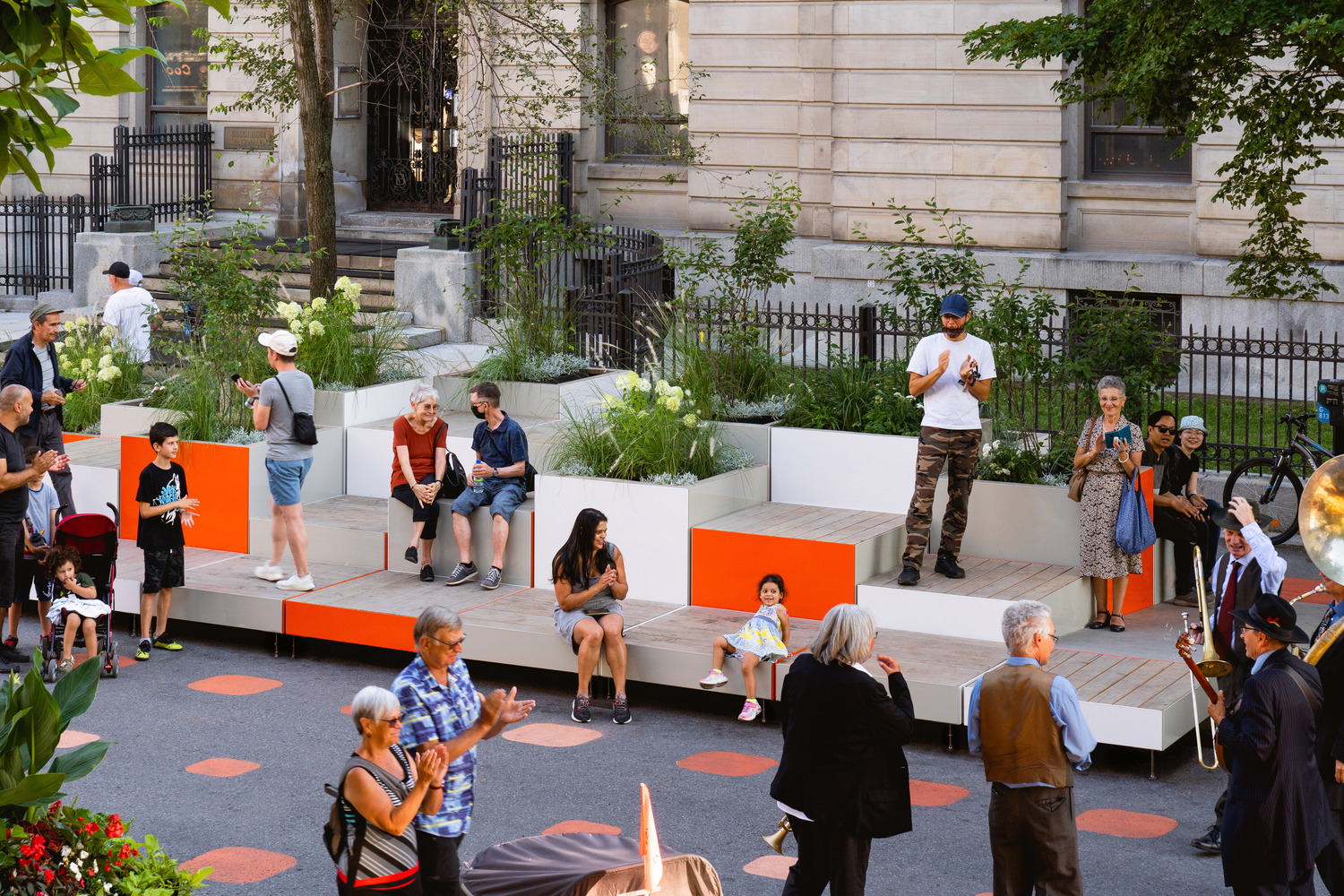
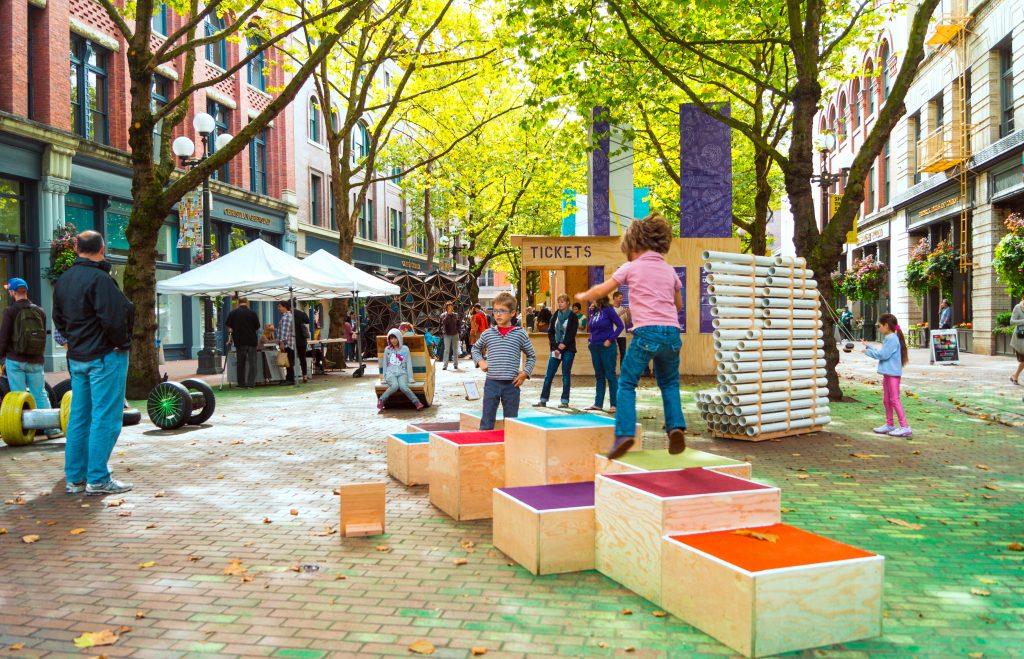
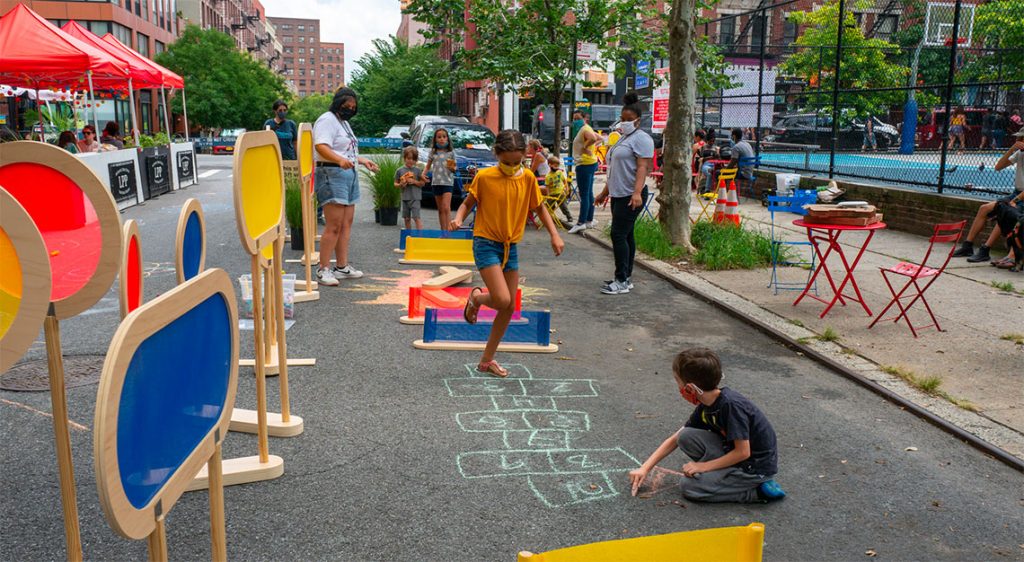
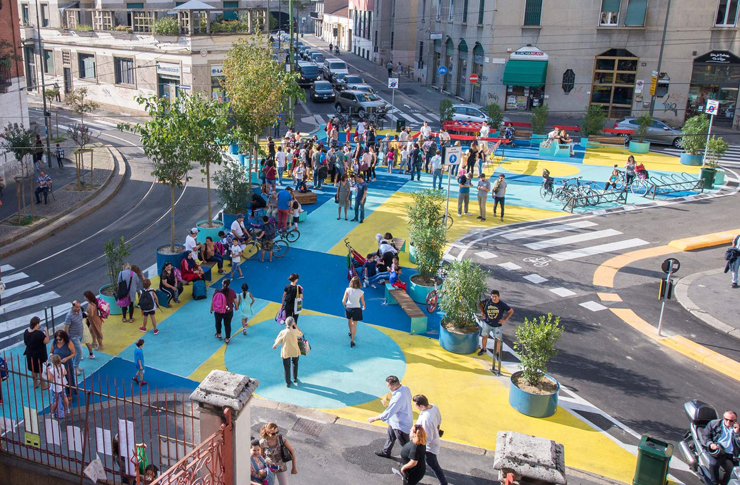
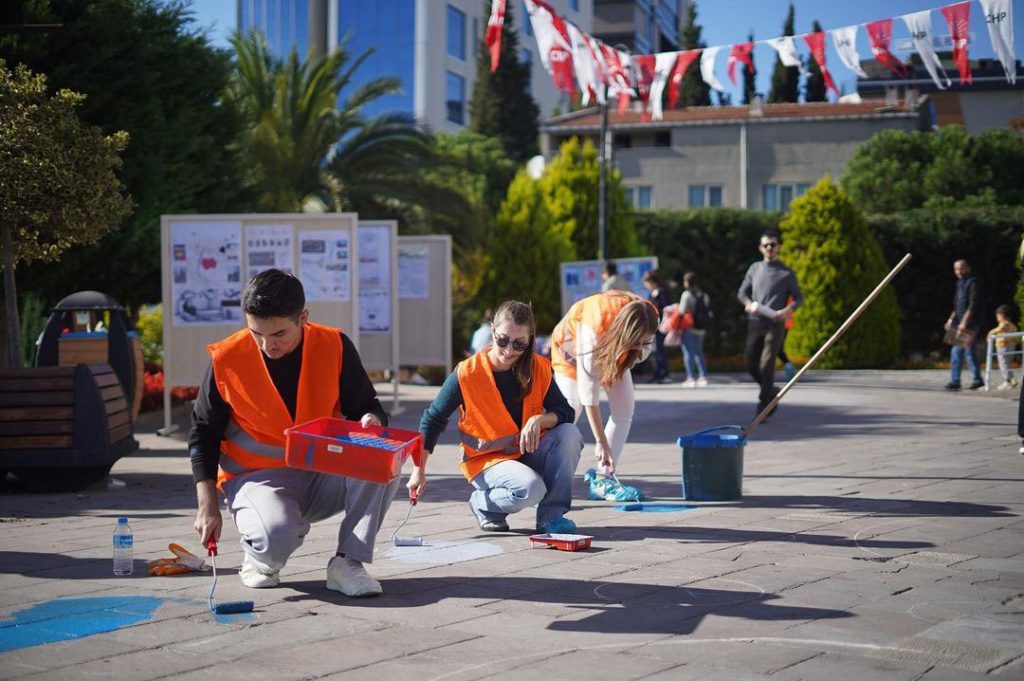
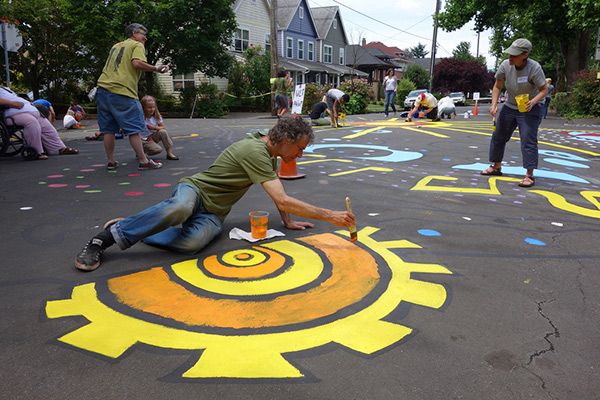
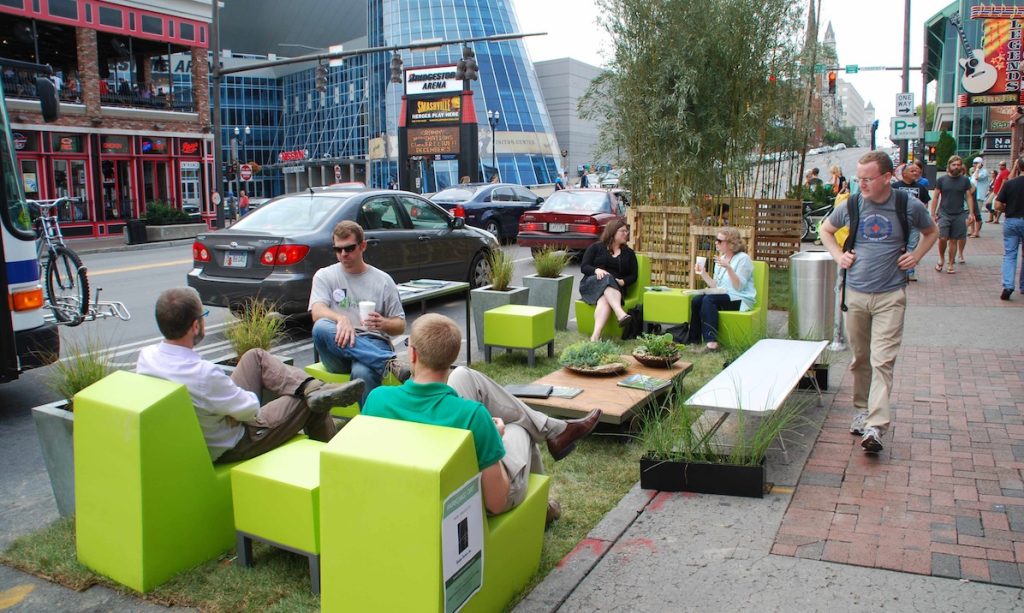
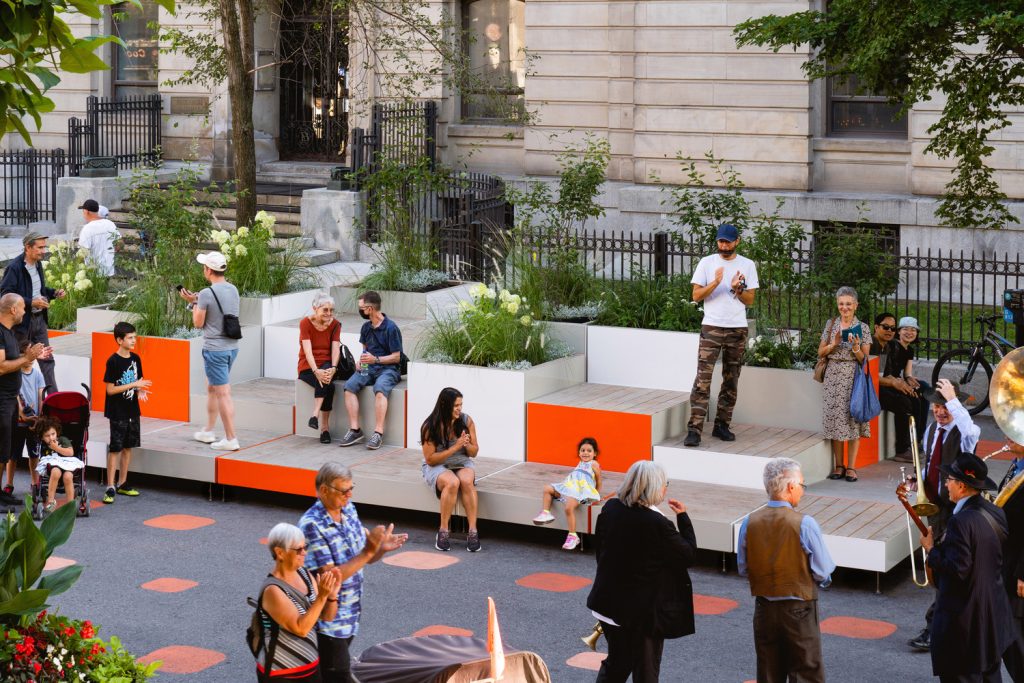
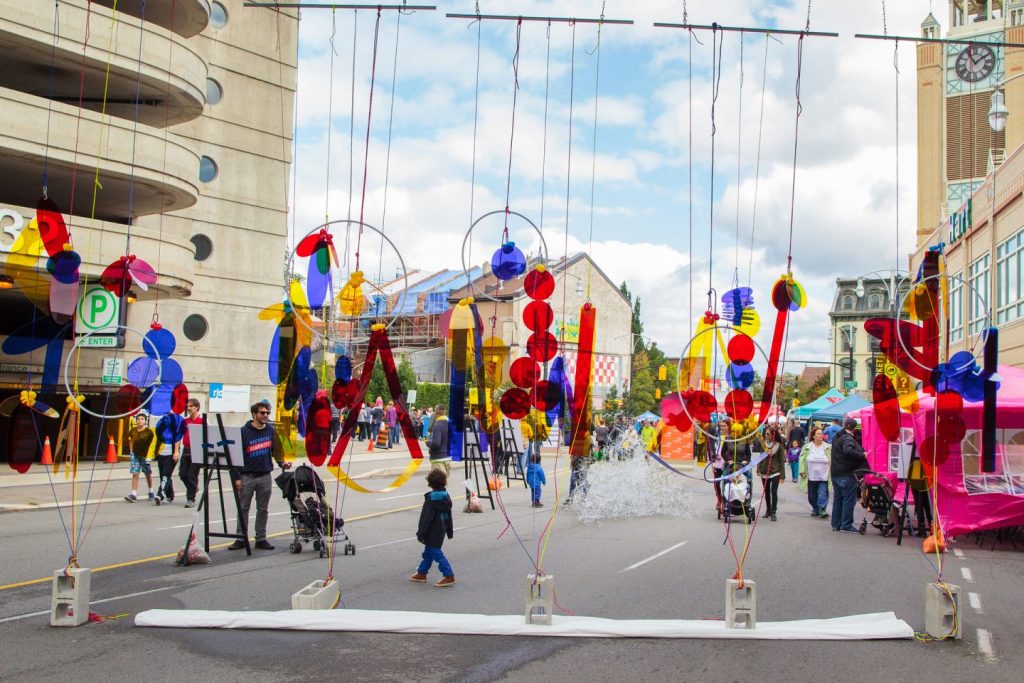
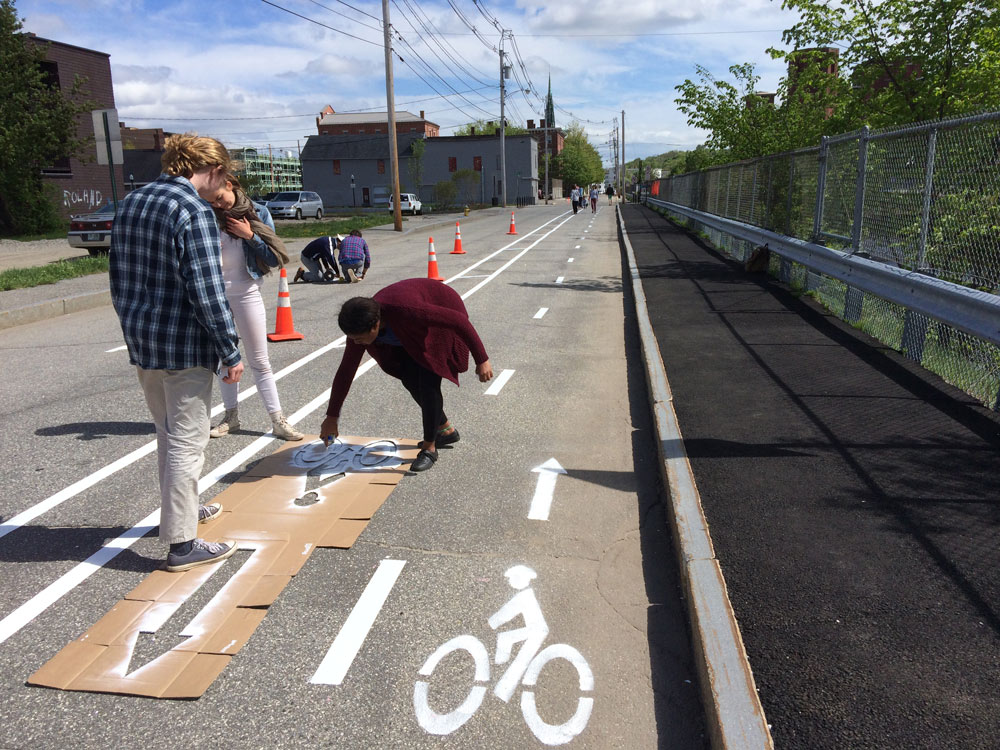
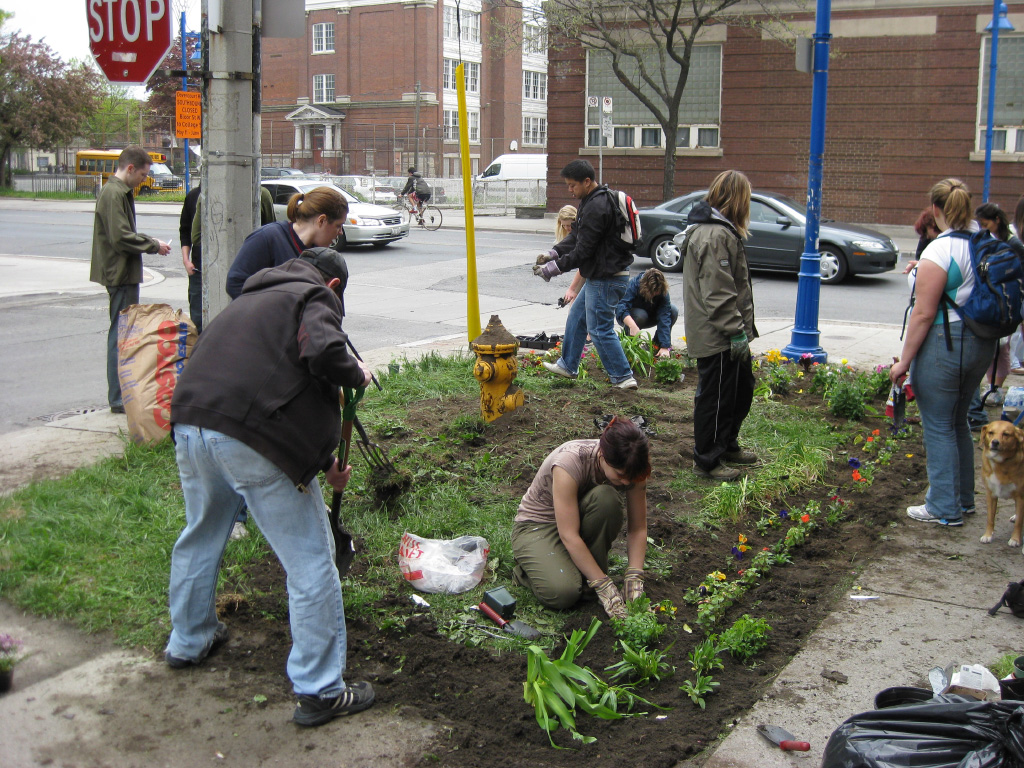
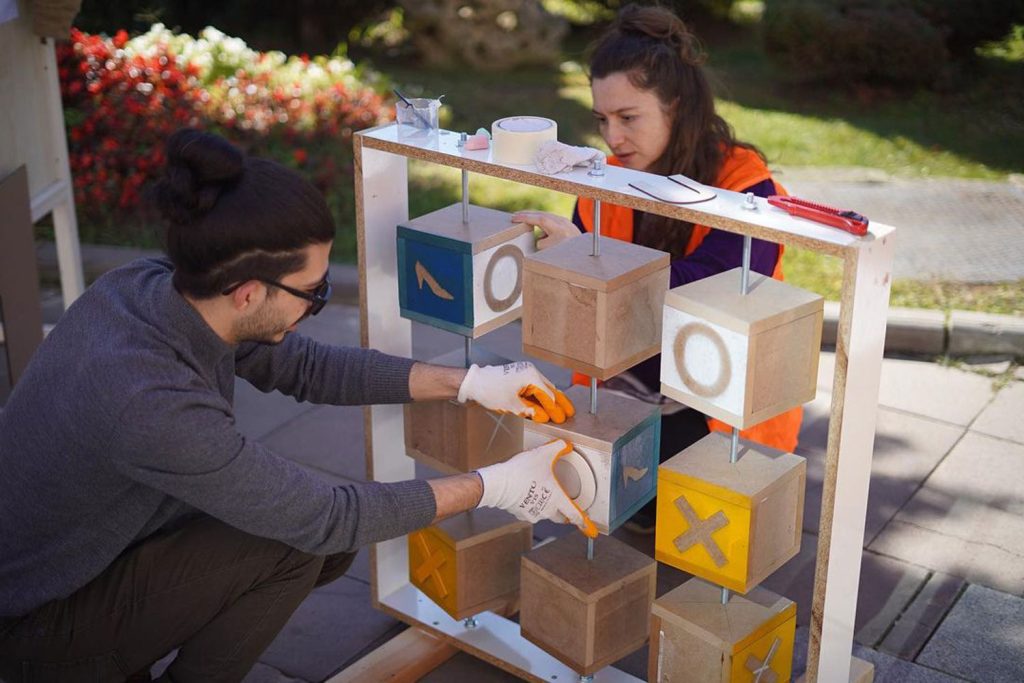

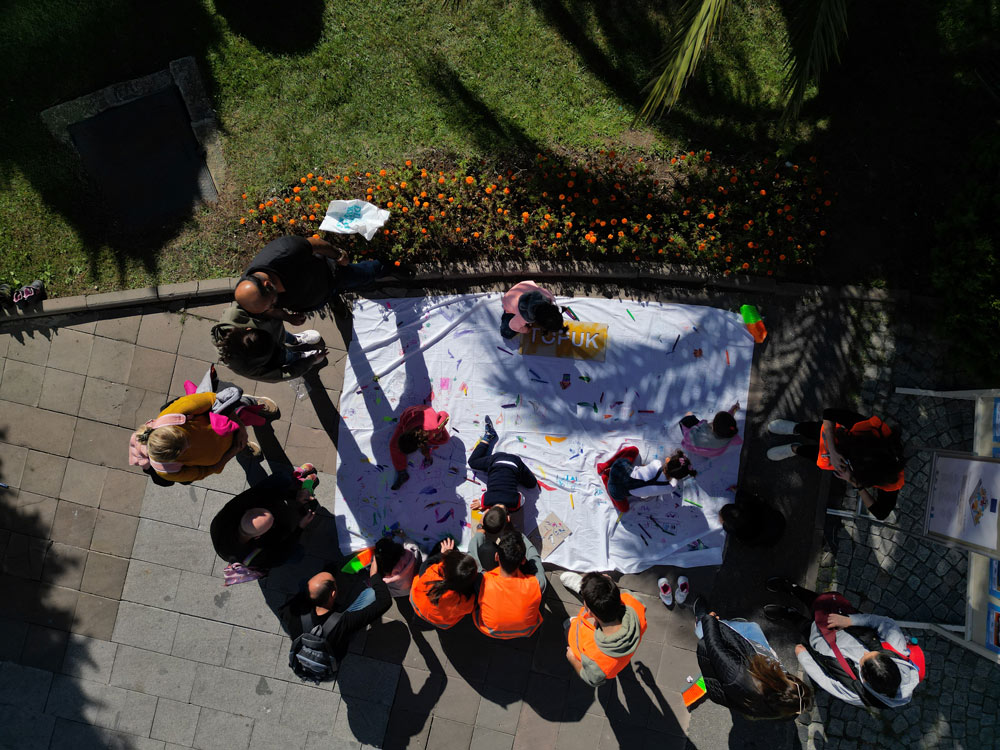
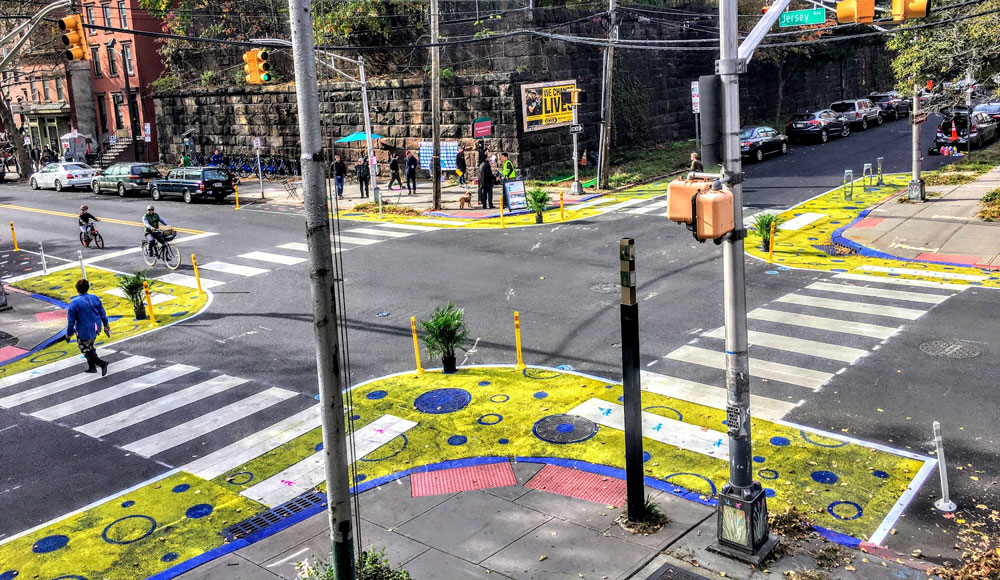














Leave a comment